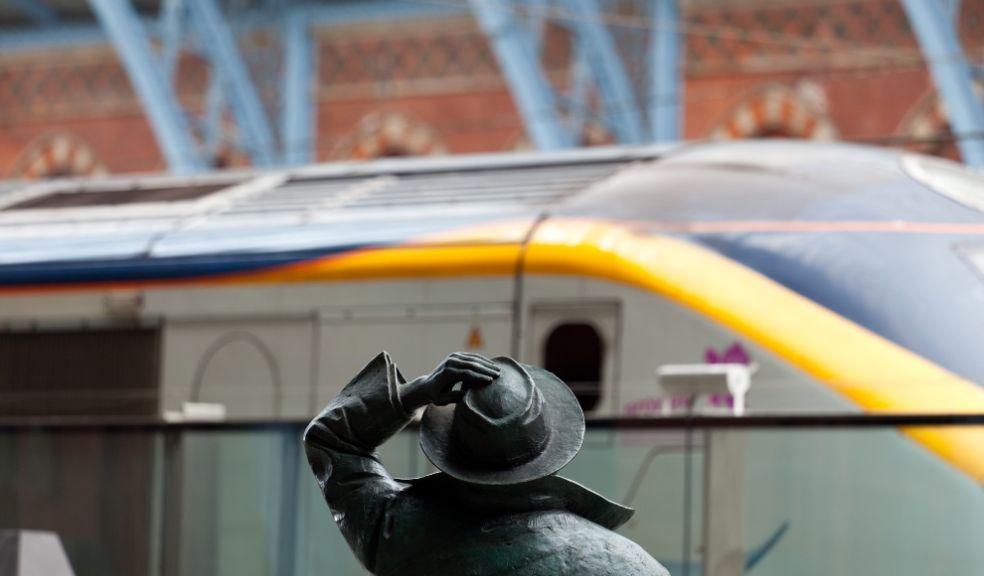
London to Amsterdam by Train: What to Expect on the Route
It used to be that flying was the default for anyone going from London to Amsterdam. But with travel habits evolving, more people are turning to the train - and for good reason. Direct high speed rail between these two capital cities has become a real contender: quick, smooth, and far more enjoyable than fighting your way through airports.
If you're considering ditching the plane, here's everything you need to know about what it's like to take the train from London to Amsterdam—and why it might just change how you travel across Europe for good.
A smooth ride from city to city
One of the biggest perks of train travel is that it’s city-center to city-center. No need for long cab rides or airport transfers. You board at London St Pancras International and step off at Amsterdam Centraal, right in the heart of each city.
The trip takes around 3 hours and 50 minutes, and the experience is far more relaxed than flying. No check-in counters, no baggage drop queues, no rushing through security terminals. You arrive about 30–45 minutes before departure, clear security and passport checks quickly, and hop on board.
In fact, we took the train from London to Amsterdam and loved it—not just for the speed, but for how much more calm and enjoyable the entire trip was compared to flying.
What the journey looks like
The Eurostar service from London to Amsterdam runs multiple times a day, usually with a morning, midday, and evening option. Trains are modern, quiet, and comfortable, with three classes of service: Standard, Standard Premier, and Business Premier.
Once on board, the journey unfolds through the south of England, into the Channel Tunnel, then across northern France and Belgium before reaching the Netherlands. The landscape shifts subtly along the way: rolling green fields in Kent, the flat farmland of Flanders, and finally the canals and low-rise architecture that mark your arrival in Amsterdam.
There’s Wi-Fi on board, power sockets at every seat, luggage racks, and a café-bar for snacks and drinks. Whether you're working, reading, watching Netflix, or just staring out the window, the time passes fast.
Booking tips and seat choices
Booking in advance is the key to getting the best price - just like with flights. Tickets usually go on sale around 6 months before departure, and prices rise as demand increases. You can compare departure times and fare options easily through platforms like SNCF Connect, which lets you book, modify, or check train status all in one place.
When reserving, you can often choose a seat preference. If you're traveling solo and want some quiet, opt for a window seat away from the café bar. Traveling in a pair or group? Go for seats around a table to make the most of the ride.
And here's a bonus: unlike air travel, there’s no extra charge for bags (within reason), no restrictions on liquids, and far less stress around what you can bring on board.
How does it compare to flying?
Let’s break it down:
|
Factor |
Train (Eurostar) |
Plane |
|
Total travel time |
~4 hours door-to-door |
~5–6 hours (incl. airports) |
|
City center access |
Yes (St Pancras to Centraal) |
No (airports outside cities) |
|
Emissions (per pax) |
~90% less CO₂ than flying |
High carbon footprint |
|
Check-in time |
30–45 minutes |
2+ hours recommended |
|
Comfort & space |
More legroom, move around freely |
Tight seating, confined space |
|
Luggage policy |
Generous, no liquid rules |
Strict, often extra fees |
Trains beat planes on almost every measure except possibly price - though that evens out quickly when you factor in airport transfers, baggage fees, and time lost.
Sustainability matters more than ever
There’s also the bigger picture: climate impact. Rail travel emits far less CO₂ per passenger than air travel. According to Eurostar, taking the train instead of flying between London and Amsterdam cuts carbon emissions by up to 90%. For eco-conscious travelers, that’s a major win.
This isn’t just about ticking the “green box.” As climate concerns grow and governments push for cleaner transport solutions, high-speed rail is becoming central to Europe’s travel future.
So when you choose the train over the plane, you’re not just picking a better experience - you’re also making a more responsible choice.
What to do when you arrive in Amsterdam
Arriving at Amsterdam Centraal drops you right into the middle of the action. From there, it’s a short tram ride to De Pijp, Jordaan, or Museumplein—or a 15-minute walk to some of the city’s most scenic canals and cafés.
Since there’s no waiting for luggage or passport control (that’s all handled in London before departure), you can start exploring immediately. Whether you’re heading to a meeting, a museum, or straight to a stroopwafel stand, you're wasting no time getting started.
Final thoughts: A Smarter Way to Travel
The idea of flying between London and Amsterdam made sense 10 years ago. Today, it feels like a hassle. Trains are faster door to door, more comfortable, better for the planet, and way less stressful.
If you're planning a trip between these two cities, give high-speed rail a serious look. It’s not just an alternative—it’s an upgrade.
















